In the final entry in our three part series entitled Museum Madness, we explore the Palace of Versailles (sort of) as well as the culturally diverse museum Quai Branly.
I’d heard of Rick Steves’ free mp3 tours awhile back but completely forgot about them until right before Paris. I was stoked to find that two of the iPhone apps, Paris Historical Walk and the Versailles Tour, were available as free downloads from Rick’s website. Too cool.
According to Rick, if we only saw one palace in all of Europe, it should be Versailles, so we set off for the Palace of Versailles with our free tour and Paris Museum Passes. We had to do some creative trip planning on the way there since our Metro passes did not cover the whole train ride, but no biggie– it was all a part of the adventure. As we made our final approach by foot to the palace, we were impressed even from afar. I could imagine being a peasant or country noble, awed by such a sight…
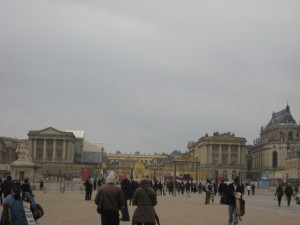
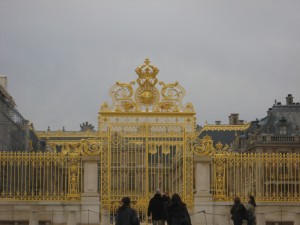
After getting through security and picking up an oh-so-helpful map (hear the sarcasm, people), we started our free audio tour. The descriptions were very helpful in putting context into all of the rooms as none of the plaques or signs had any translations, despite the fact that most tourists were non-French speakers. Of course, this is probably just to force you to rent the 7€ (10 on the weekends) audio guides. With the exception of the British Museum, we have found that most are not worth the expense. And yet, I digress–
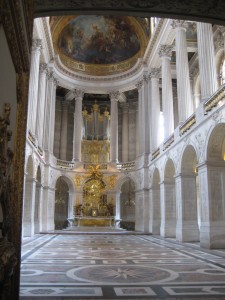
The Versailles is indeed a very impressive complex. Initially occupied with such opulence by King Louis XIV, the self-proclaimed “Sun King”, Versailles was part ego-maniacal, part nobility control. Mistreated as a youth, Louis XIV was a shrewd politician and leader, forcing all his nobles to hold court at Versailles so as to distract them, allowing him to run the country as he wished. The palace stayed in the family for only three more generations before being ransacked during the French Revolution. The art went to the Louvre; the furnishings went to auction.
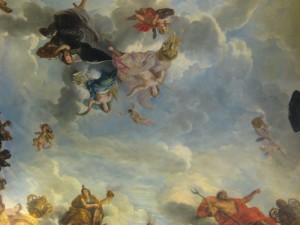
And herein lies the rub. The palace is grand and impressive and mocked up well enough, but I thought it lacked character without the long-gone furnishings. I found that I had seen better in other cities (the Hapburgs’ palace in Vienna comes to mind) for less. Knowing what I know now, I would have been a little upset if it hadn’t been covered by the museum pass and I’d paid the full entrance fee (15€ at the moment). There really wasn’t much to explore inside, and while we’ve heard the gardens (free to the public) are some of the most beautiful, the fall/winter doesn’t see much (blooming) there and most of the statues are covered up for the season. Add to that the 30-45 minute ride from city center one way, and it kind of doesn’t add up. Charity and I agreed that perhaps at 10€, maybe, but 15 seems kind of steep.
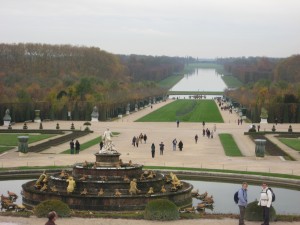
So we ditched Versailles only halfway through the garden part of Rick’s tour. We wanted to hurry back to the city to squeeze in just one more museum on the pass.
We’d learned of the Quai Branly museum from its temporary exhibit at the Louvre. The Quai Branly covers in depth a lot of the art missing from the Louvre: Africa, Oceania, the Americas, and Asia. We arrived just under two hours before closing, and right away, we knew the museum would interesting. First, the building was very different from all the other museums we’d visited in Paris, built in a modern style that reminded me strongly of modern Pacific Northwest architecture– glass and natural light meeting wood and metal elements, creating a functional space.
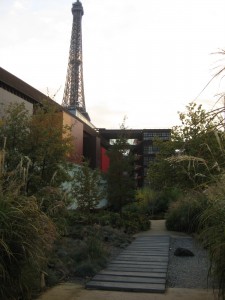
The museum was also one of the best organized we’d ever visited with nearly everything displayed in glass cases in the middle of the floor, allowing you a 360 degree view of the artifacts. Stuff that was in “storage” was in a couple of huge glass… towers?… neatly organized by serial numbers and allowing visitors to get a hint of what was not currently exhibited. There were clever bench alcoves everywhere, some of which were equipped with interactive displays exploring some aspect of a native culture, art, or history. Some were even in English.
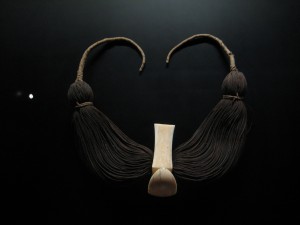
As you walked through the different sections, your attention would occasionally be drawn to audio from a village in Africa or the South Pacific. Most pieces did not have English descriptions, so we kind of cruised through and tried to figure out non-obvious objects. We were lucky enough to catch a temporary exhibit of Iranian photographs– thought provoking and fuel for my Iran curiosity.
The Quai Branly was definitely one of my favorite museums thus far. I would recommend stopping in even for a quick visit if you’re into art/native artifacts from outside of Europe, especially if it’s still covered by the Paris Museum Pass.

